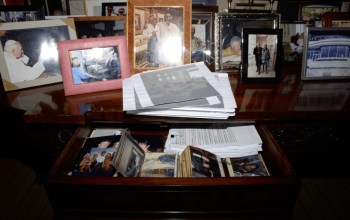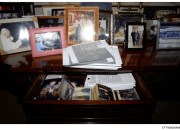Trump Escalates Free Speech Clash with $15 Billion Lawsuit Against NYT
President Donald Trump has intensified his ongoing battle over media coverage by filing a $15 billion defamation lawsuit against The New York Times. In the suit, Trump alleges that the newspaper has repeatedly published false and defamatory stories, targeting him unfairly and damaging his reputation. He characterized The New York Times as “the biggest offender out there” in perpetuating what he calls biased reporting against him.
This lawsuit represents one of the largest media-related defamation claims in recent U.S. history, reflecting Trump’s aggressive approach to what he perceives as attacks on his free speech rights. Legal analysts note that the case could have wide-reaching implications for the media, particularly regarding investigative reporting on public figures and government officials.
Trump’s legal action coincides with his broader campaign to challenge media narratives that he deems unfavorable. His attorneys argue that The New York Times knowingly disseminated false information, exaggerating or fabricating claims about his actions while in office and in post-presidency activities. The lawsuit alleges both actual malice and recklessness, which are key standards in defamation cases involving public figures.
The move has sparked intense debate across political and legal spheres. Critics argue that such a massive lawsuit could intimidate journalists and hinder investigative reporting, potentially chilling free speech and press freedom. Supporters of Trump contend that public figures should be held accountable when major media outlets publish demonstrably false or misleading information that damages reputations.
Media watchdogs emphasize the importance of this case in balancing the First Amendment protections with the rights of individuals to seek legal redress for reputational harm. If successful, the lawsuit could set a precedent for large-scale defamation claims against major news organizations, influencing both journalism standards and public discourse.
This legal escalation also follows Trump’s recent remarks criticizing prominent media outlets, which he claims consistently misrepresent conservative voices and policies. By framing the lawsuit as part of a broader effort to combat perceived bias, Trump continues to position himself at the center of the national debate over free speech, media accountability, and the role of journalism in American democracy.
The case is expected to proceed through complex pre-trial motions and discovery, with legal experts predicting a protracted battle that could last years. Meanwhile, public reaction remains sharply divided, reflecting the polarized nature of media and political discourse in the United States.

:max_bytes(150000):strip_icc():focal(749x0:751x2)/Karoline-Leavitt-Expecting-Baby-No-2-122625-3ee9c9c5c0004741808a746cca98b9b2.jpg?w=350&resize=350,220&ssl=1)





:max_bytes(150000):strip_icc():focal(749x0:751x2)/Karoline-Leavitt-Expecting-Baby-No-2-122625-3ee9c9c5c0004741808a746cca98b9b2.jpg?w=180&resize=180,130&ssl=1)




